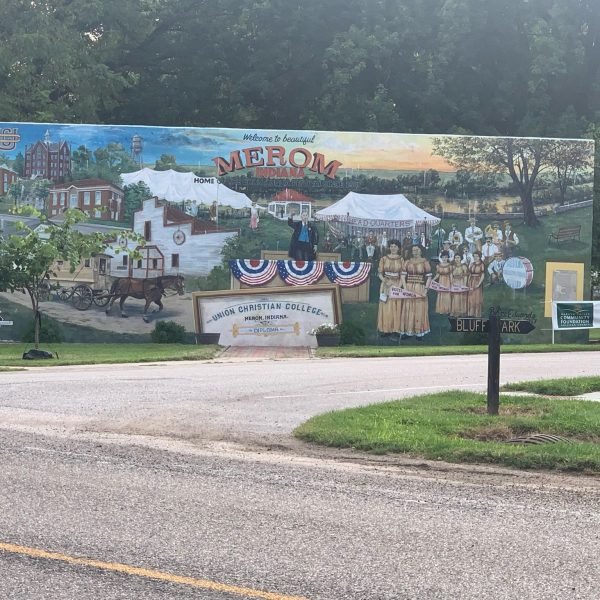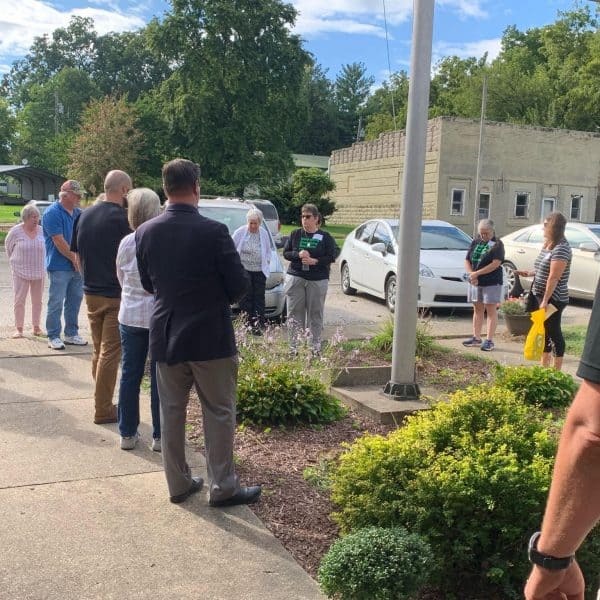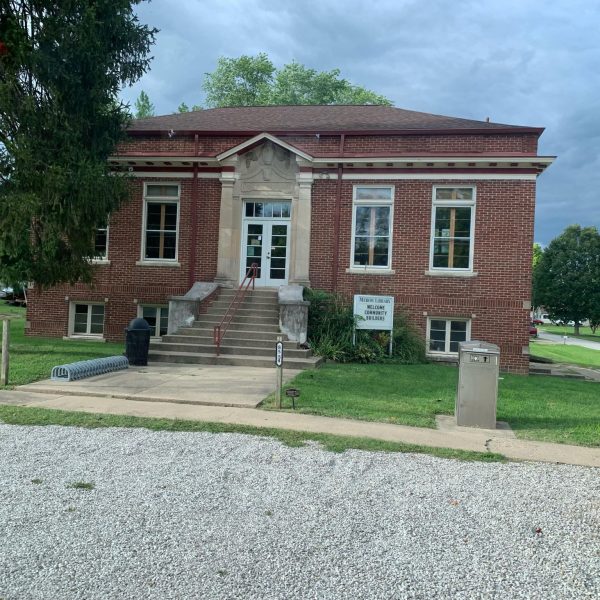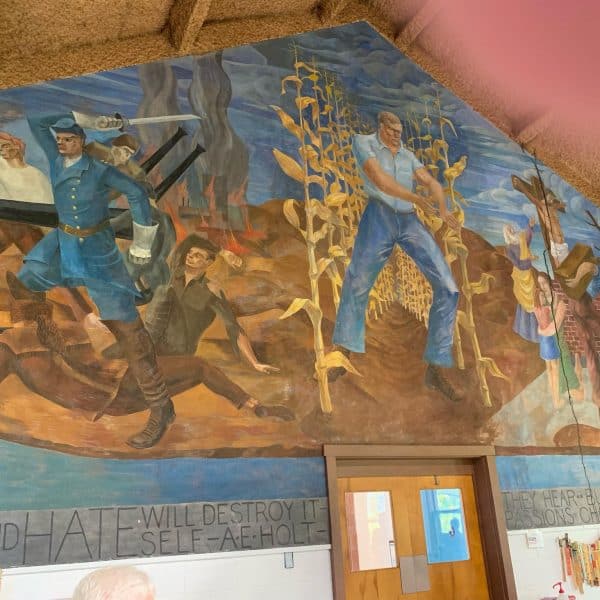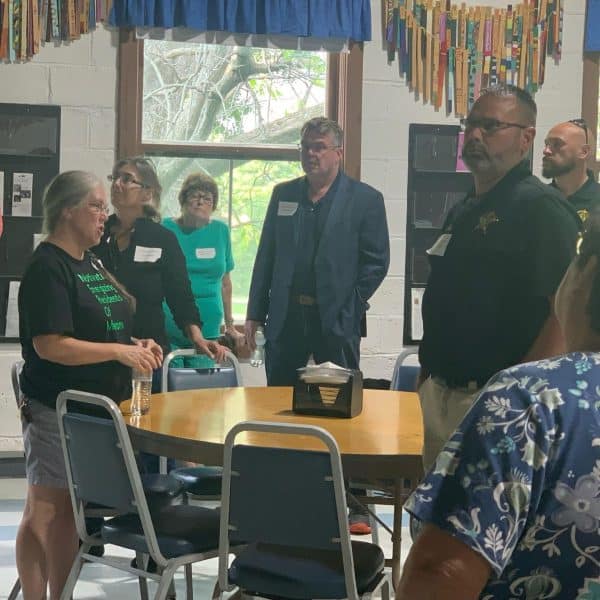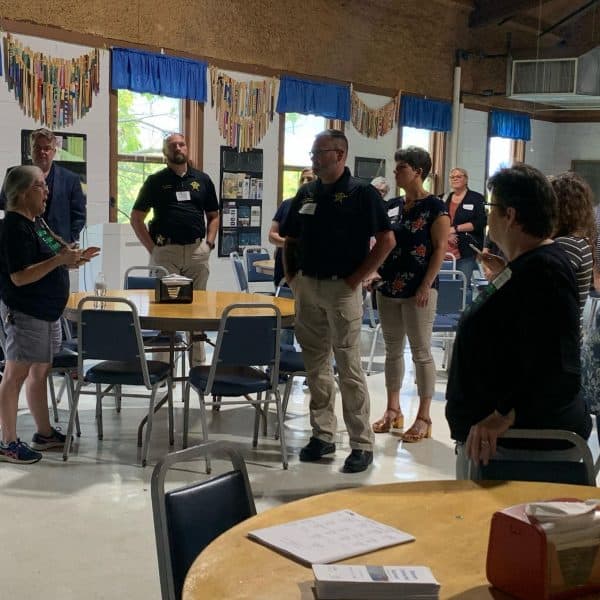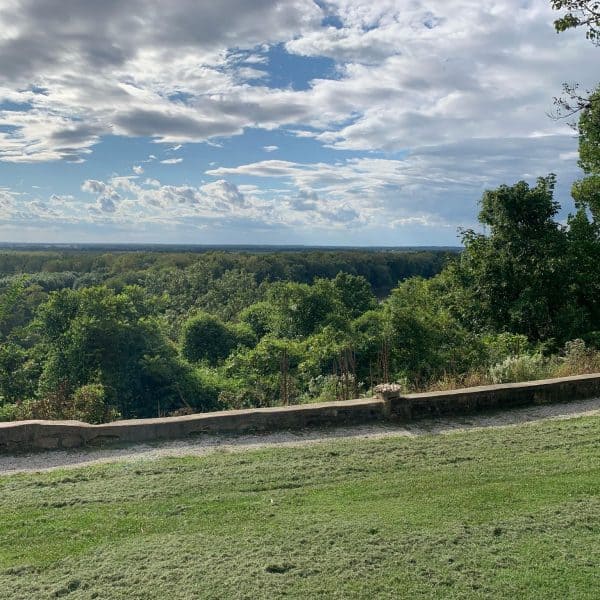On the banks of the Wabash River in Sullivan County, Indiana lies a very small town by the name of Merom. Its name, Merom, means high place on the river and it commemorates the Battle of the Waters of Merom, a story that appears in the Old Testament. With a population of around 191 (according to the 2020 Census), Merom may seem like just a dot on a map. But the town has a beautiful charm that’s not found elsewhere, and its residents have a deep love and appreciation of their community’s history, present and their future.
Merom’s Role in History
Merom was an important part of Indiana and United States history before it was even officially founded in 1817. It was one of the most important towns between Vincennes and Terre Haute because of its access to the Wabash River. The river served several functions, mainly as a port. Residents transferred their goods on flatboats to New Orleans to sell in the city. When they sold their items in New Orleans, they also sold the boats and returned to Merom on horseback and repeated the process.
Additionally, Merom played an important role in the War of 1812 when William Henry Harrison’s soldiers came through the town on the stagecoach on their way to the Battle of Tippecanoe. It’s also said that Merom was a stop on the Underground Railroad, where ex-slaves would come to use the nearby water channel to make their way to Terre Haute.
Merom is well known for being the home of Chautauqua gatherings from 1905 to 1936, which took place on the Merom Bluff. The Chautauqua were assemblies that took place in rural American towns in the late 19th and early 20th centuries. Trains and horses brought upwards of 50,000 people to the Merom Bluff Chautauqua that focused on education, current events, politics, religion and entertainment. People lived in tents for ten days at the Bluffs to learn what was going on in the nation at the time. Famous speakers included William Howard Taft, William Jennings Bryan, Billy Sunday, and Carrie Nation. The Johnson Brothers flew their airplane off the Bluff in the early 1900s as part of the Chautauqua entertainment.
The Bluffs provide a stunning view of the Wabash Valley (with steps that lead down to the riverfront) and look across the water to Illinois. The sandstone wall that overlooks the river was built in 1934 as part of the Works Progress Administration (WPA). Additionally surrounding the Bluffs are playground equipment, a shelter house, picnic shelters and overnight camping sites. The community is also working on a trail expansion project that will create a mile-long trail along the river to allow hiking and walking.
The Merom Community
Many of Merom’s residents work outside the community, in neighboring areas such as Vigo County, Terre Haute and Illinois. They are also farmers and work for Hoosier Energy. Yet maintaining the history of its community, as well as providing for its future, is important to Merom. The post office is housed in the Merom State Bank, which went out of business in the 1930s during the Great Depression.
The library was built in 1915 for less than $10,000. Today, it is designated as an Andrew Carnegie Library and is included on the National Register of Historic Place. Merom is the smallest town in the United States to receive a Carnegie library. It provides free WiFi and sees patrons each day it’s open, working on puzzles and using computers. Every day, upwards of 14 children exit the school bus and enter the library to work on homework. Because of the library’s existence, Merom is fitted with fiberoptic internet that provides for the entire town. The library also houses a community garden that’s maintained by ten families. The produce is distributed to those in need and library patrons.
Merom is also home to a community of artists, including Ken Dials. Born with congenital macular degeneration, Ken is legally blind. However, he’s always been able to see and appreciate the beauty in the world around him. He traces outlines and creates art with a Number 2 pencil. Because he’s color blind, he relies on shading go create depth, texture and his own unique perspectives. Ken’s artwork is on display at the library and community center.
Meleah’s Café is a local favorite. Owned and operated by Meleah and John Sullivan,
Meleah’s used to be a grocery store. It was turned into a restaurant when Hoosier Energy was building the Merom Generating Station and it provided meals to construction workers. The restaurant offers delicious breakfast and lunches, as well as a Friday fish diner. They also offer catering services.
The Merom Camp and Retreat Center is a year-round facility offering summer camps and retreats for all ages. They also hose nonprofits, school groups, churches, families, weddings and reunions. More than 2,000 people attend events each year. The center’s auditorium seats 200 people and is used largely as part of the theater camp that’s offered to kids each year. The Retreat Center was formerly Union Christian College, which was a co-ed college that began in the 1860s. The facility hosts a high ropes course and challenge course for groups. They offer outdoor education for school groups, and retreats for adults and youth.
One of the most notable parts of the Merom Camp and Retreat Center is the mural in Holt Hall, which represents the central role of rural life in the present and future of Christian democracy in America. The mural was painted by Thomas C. Steger and based on AE Holt’s words, “A world based on force and hate will destroy itself.”
Maintaining and Providing for Merom’s Future
Hoosier Energy is one of the largest employers in Merom. They own the rural cooperative Merom Generating Station. Rural cooperatives are designed and built to bring energy to rural communities and areas away from the main part of the county. Hoosier Energy bought the current property in the mid 1970s and the plant has been in existence since the 1980s. One of the areas that has been developed with the generating station is Turtle Creek Reservoir, a 1,500-acre lake open to the public for fishing.
Merom is about to experience a new employer and investment in the area with AboutBit. The company is a high-tech cryptocurrency mining facility that will mine Bitcoin. It takes $8,000 of electric power to mine one single bitcoin. The company chose to invest in Merom because it needed to be close to a place with ample and cost-effective power. AboutBit will build a 10-acre site adjacent to the Merom Generating Station, and over the next several years, will make a $50 million investment in the Merom community.
The community of Merom, with its rich history and beautiful landscape, is a special place. Its residents are proud of what they have built over the years. They maintain their history proudly while also embracing new companies that will help Merom continue to secure its place in Sullivan County.
To learn more about the Sullivan County Community Builders Institute, please contact the Community Foundation at 812-232-2234.
Article written by Leah Singer, a freelance writer who lives in the Wabash Valley.

